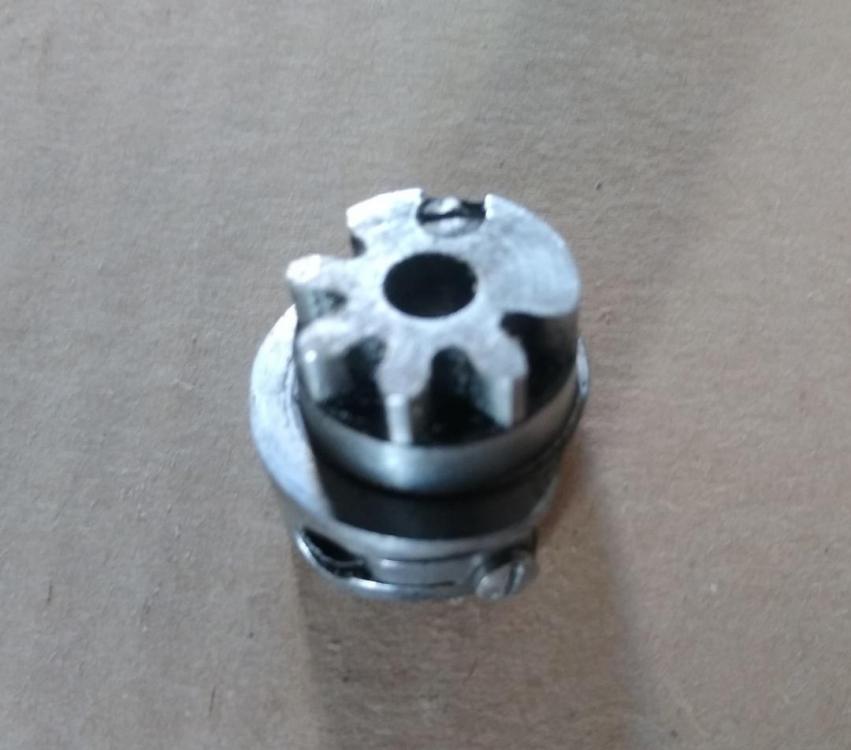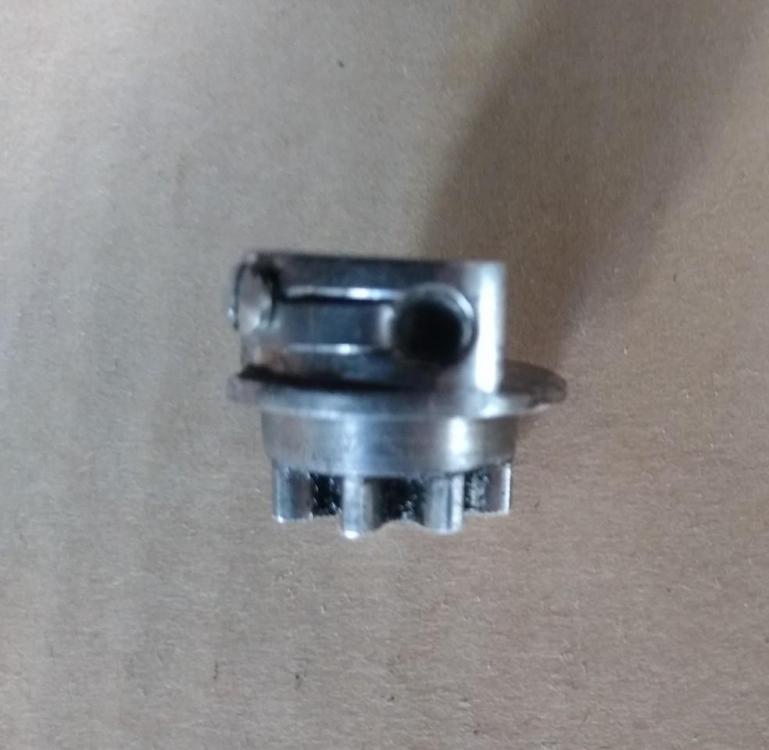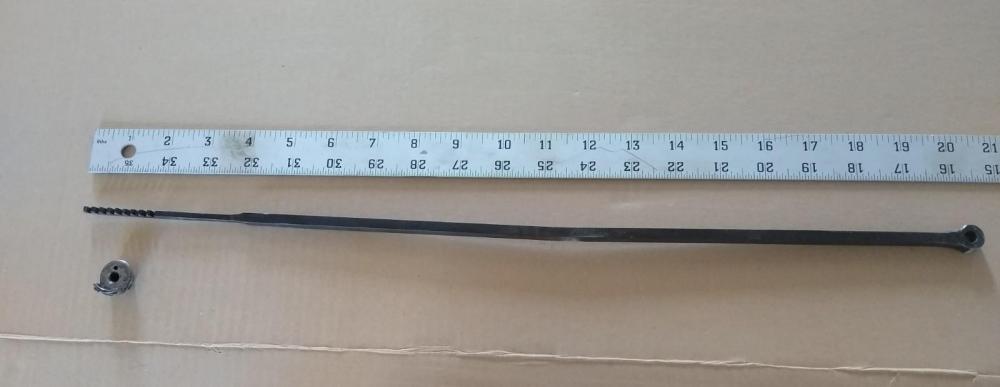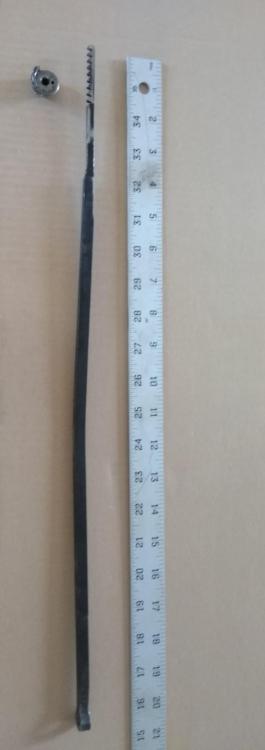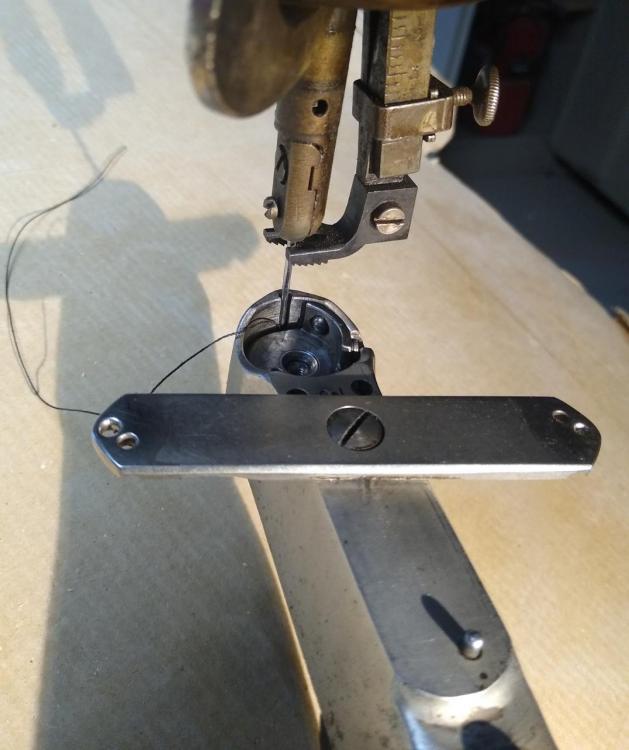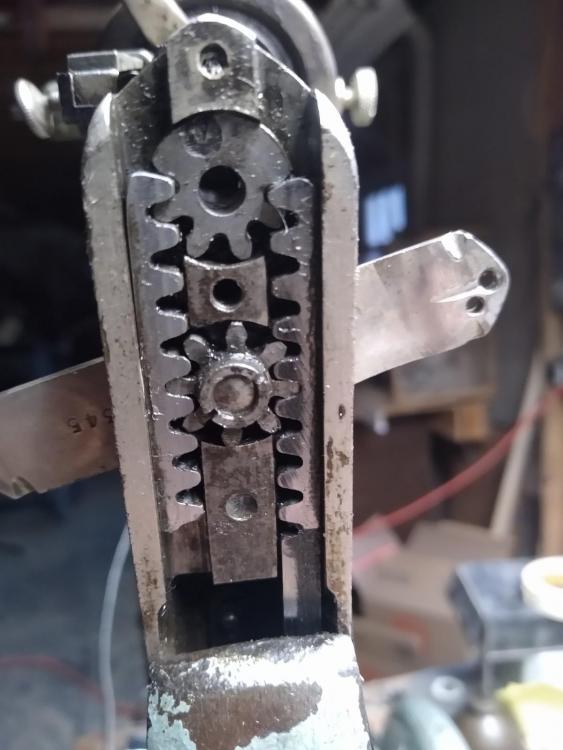
Rance
Members-
Posts
8 -
Joined
-
Last visited
Profile Information
-
Location
Colorado
-
Interests
old, rusty, heavy stuff that tends to leak oil
LW Info
-
Interested in learning about
Getting an Adler 30-1 functional
-
How did you find leatherworker.net?
Internet
Recent Profile Visitors
1,000 profile views
Rance's Achievements

New Member (1/4)
-
My Adler 30-1 has been working really well but it has an annoying tendency for the foot to leave marks on the leather. Its particularly noticeable on softer, thicker leather. I have the foot pressure adjusted for as light as possible. I've thought of lightly filing the sole of the foot to remove some of the sharpness, but I don't want it to start slipping either. Any suggestions? Thanks
-
Couple questions about thread. My Adler 30-1 now sews like a dream and its time to put it to work. While I was repairing it I read a number of posts attributing various problems to poor quality thread, which makes a lot of sense. I'm planning on using primarily 92 and 138 polyester thread for various leather projects and maybe occasional sewing of canvas, nylon webbing, backpack repair, etc. I figure on using polyester, not that everything I sew will end up outdoors, it just minimizes the types of thread I'd need on hand. A couple of spools will last me for years so its no problem dropping a few more bucks to avoid problems and cover the widest range of possible uses. So then, what brands are the best (or least problematic) thread? Apparently 138 is the heaviest thread a 30-1 can handle, correct? Is using bonded thread important? I assume I need to adjust tension on the shuttle and on the upper thread for different sizes, correct? Maybe easier to have a different shuttle for each size thread, huh? Thanks!
-
Well, I think I got all my problems resolved. My machine seems to sew quite nicely in a variety of materials. I'm posting this primarily for future readers who may encounter similar problems. I knew absolutely nothing about industrial sewing machines when I ran across this one. My machine was in worse shape than it appeared and evidently had been partially disassembled and put back together incorrectly at some point in its past. It had also been stored in a wet or humid environment. I lucked out because it was basically in good condition with little wear. Had that not been the case I discovered that Adler parts are fantastically expensive and getting this critter operational would have cost far more than its worth. Also, there's precious little factory information available on 30-1 machines. The 30-10 mechanics manual is readily available but its not identical to the 30-1. I've attached a 30-1 parts diagram for reference, originally posted some years back on this site by the now passed fellow from Keystone sewing. It was of great help to me. I was not able to resolve the shuttle carrier positioning problem without cutting and shortening the drive rack by 1/4" and adding an adjustable splice. This was definitely not a good solution but I simply could not figure why it was so far out. The eccentric adjusting bolt in the cam lever didn't have enough of an offset to allow for the amount of adjustment necessary. I understand that new drive racks are now two piece and adjustable. I discovered by watching Youtube videos that with the flywheel on the front it's turned clockwise. My machine sewed but it had to be turned counterclockwise. This was due to the cam/drive pulley being 180 degrees out of position. The manual is a bit confusing because it does reference counterclockwise rotation--but that's with the flywheel mounted on the end of the machine. The machine was pretty stiff and required more force than expected to turn the flywheel. I disassembled the head, cleaned the rust and gunk out of it so all the parts moved much more freely. Lesson learned there is not to cut corners. Take the time and do what needs to be done properly. Just squirting in more WD40 is not adequate! I had considerable difficulty with the timing and dropped stitches. The 30-10 manual addresses this but isn't terribly clear. Maybe the original German is, but the English translation is a little vague. I finally made a temporary throat plate out of clear plastic and then sewed through another thin piece of clear plastic. That way I could see exactly what was going on and line up the shuttle hook with the needle and thread loop. Adjusting the timing requires loosening and turning the shuttle cam on the main shaft. That process is covered in the 30-10 manual. But not mentioned is that if the cam slides back toward the drive pulley it throws the shuttle position out of whack so make sure the bevel gears are fully meshed before retightening the set screws otherwise you'll be chasing your tail. I still have no idea what thread size the screws and bolts are on this machine. Neither my metric nor SAE taps & dies fit. Not sure if they used the Singer screw system or one of their own. I ended up drilling and retapping a few screw holes to accommodate 6-32 and 8-32 screws in non-critical places. Lastly I wish to thank the members that commented and offered advice on my posts. Their help was invaluable. Adler 30-1.pdf
-
Hey guys, You were right about the drive pulley being out 180 degrees causing the machine to feed backwards. I haven't had a chance to retime it yet but driving out the pin rotating the pulley 180 and replacing the pin fixed the feed issue. Just wonder what other bedevilments this thing has yet to offer! Another question though: The flat head screw that holds the shuttle drive in place is missing. Its not metric, its not SAE (although 5-40 comes close), is it Singer screw thread or something else yet again? Many thanks for your ongoing help and support! Rance
-
I got the shuttle drive alignment problem fixed by shortening the drive rack and adding an adjustable splice. The eccentric cam bolt did not have enough adjustment range on its own. I'll add pics of that to my previous post. The machine now sews but needs further tweaking because it skips a stitch once in a while. The problem, or perhaps it isn't one, is that with the hand wheel mounted on the front, not on the cam pulley shaft, I need to turn it counter clockwise for material to move through the machine in the normal way. The machines I see on Youtube all turn clockwise. Has anyone else encountered this? Thanks, Rance
-
Here are a couple of pics of the shuttle drive and drive rack. I know about the timing bolt you have labeled 1 & 2 in your pic. That's what doesn't have enough eccentricity to get the leading edge of the shuttle drive to line up with the needle slot. The length of the drive rack is 20 1/8" from the end of the rack to the center of the eye. It has slight bends in both axis which allow it to align with its respective way. I can easily fabricate a new eccentric bolt with a larger offset which will solve the problem but that doesn't address the root cause of what's going on here.
-
I recently bought an Adler 30-1, one of the green ones, maybe from the '70's. Hasn't been used for 40+ years according to the previous owner who couldn't get it to work. I cannot get the timing set right. The lead edge of the shuttle carrier simply comes short of lining up with the needle slot (per the mechanic's manual) no matter how I set the racks and pinion/drive gear. The adjusting cam in the bell crank eye does not have enough range. It seems like the drive rack is about 1/4" too long, the shuttle drive is an incorrect part, or the bell crank is bent, but there's no evidence of that and its pretty robust, hard to see how that could get bent. Overall the machine is very tight, no slop in the bearings, gears, etc. The mechanics manual I have is for a 30-10 and I think that's different from a 30-1. Does anyone have a 30-1 mechanics manual? Constabulary posted one, along with an owners guide back in 2014 but those links are now dead. I've seen images of shuttle drives that are a full 8 tooth as well as partial 4 tooth ones like mine. Which is correct for a 30-1? Could I have a Singer drive that "fits" but has different shuttle alignment than does an Adler drive? Only fix I can come up with is to fabricate a new adjusting cam that has a greater eccentric throw, and that seems to be a really odd thing to have to do. All suggestions will be greatly appreciated! Thanks.



